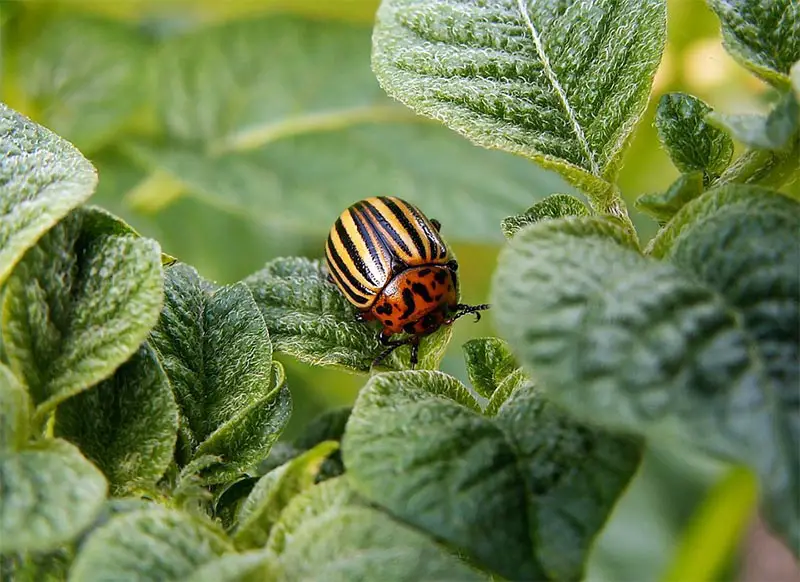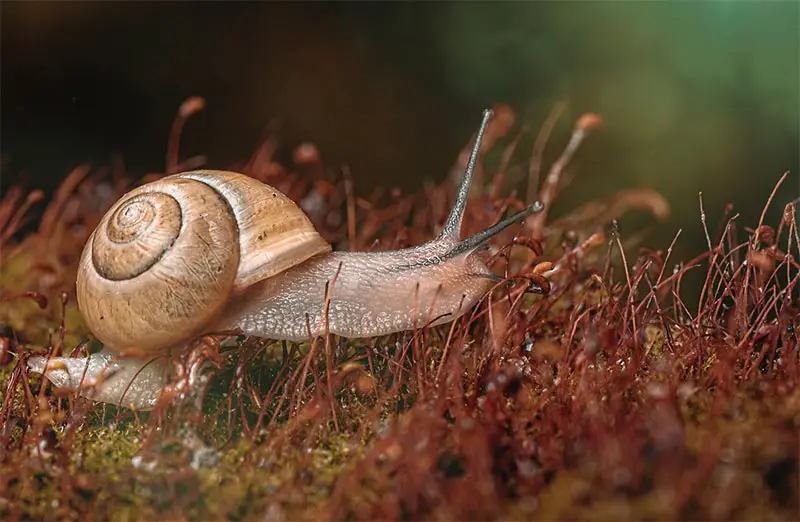Is Insecticide Safe for Bonsais?
Growers of bonsais have many things to worry about. Even after you have chosen the perfect pot for your plant, and the perfect soil, thought about which fertilizer to use, and how and when to water your bonsai, there is still the problem of PESTS.
At the very least, pests can affect the appearance of your plant. From lacey-edged holes in leaves that have been nibbled by tiny teeth, to fine webs woven between leaves, to wilted and yellowing foliage, pests have a lot to answer for. At the worst, pests can cause bonsais to lose their leaves, their branches, or even their lives.
Read on to find out more about pests that can harm your bonsais, and how you can get rid of them.

General Tips
In keeping with Murphy’s famous law, you often find that pests tend to pick on plants that are already not in the best of health. Whether bugs choose sickly plants on purpose, or whether it’s just that the more feeble plants are less resilient against them, it’s hard to say – but the more you get your plant growing vigorously, the less vulnerable it will be to all kinds of pests and diseases.
So the first thing you can do to protect your bonsai against bugs is to monitor carefully all the aspects of its health that are under your control: does it have the right light and temperature conditions in its environment, the right soil, and the right water? Does it need to be re-potted, pruned, or fertilized? Getting these aspects right will improve any plant’s health, resilience, and ability to withstand attacks from pests.
If, in spite of all your care and precautions, you end up with bugs on your bonsais, there are different types of insecticides you can use. Systemic insecticides are those that you pour onto the soil; they’re absorbed by the plant’s roots, and circulated throughout the plant’s system.
Thereafter, if an insect tries to munch on any part of the plant, it will get frizzled. This is especially nifty if you suspect you may have pests attacking the roots of your bonsai, because you normally can’t even see these pests, let alone get them off easily.
Alternatively, you can spray a contact insecticide onto the plant. That will kill any pests it comes into contact with, that are actually sitting on the plant at the time, but won’t do any harm to anything that bites into the plant at a later point. If you want to avoid using insecticides, there are still plenty of non-toxic options for you to try – for example, insecticidal soap.

Insecticidal soap – which you can buy or make at home – is effective against soft-bodied insects, including spider mites, whiteflies, mealybugs and even aphids. Insecticidal soap works not by poisoning the insects, but by physically penetrating the outer layer of the insect’s body, and drying it out.
The insect’s cells collapse, killing it ‘from the inside,’ so to speak. Even some hard-shelled pests, like scale insects, can be effectively killed with insecticidal soap: the soap can’t dry out the whole bodies of these pests, but it can suffocate them to death.
Because it works on small, soft-bodied creatures, by physically drying them out (or suffocating them), insecticidal soap doesn’t harm larger or harder creatures. That means you can safely use as much insecticidal soap as you want, without having to worry about harming your pollinating bees, predatory wasps, lacewings, or birds.
Sometimes, if you’re lucky, when you see some bugs on your bonsai, you’ll be able to remove them by hand, and you won’t need to use any kind of product at all. However, this can be almost impossible if you have too many plants, with too many bugs on them, or if the bugs are very small, or blend in very well with the plant they are on.
In these cases – although it sounds very counterintuitive – one of the best ways to get rid of the pests is to introduce another type of insect into your garden that will prey on the insects that are threatening your bonsai. For example, if you have a problem with aphids, you may need to introduce some mayfly larvae. They’re also delicious snacks for ladybugs.

Specific Pests
While boosting the overall health and vigor of your bonsai will help it to withstand bug attacks, you may need to take steps to help get rid of the pests. Here are some of the most common, and the best ways to combat each.
Aphids
Aphids are sometimes referred to as plant lice: the’re quite small, quite common, and very destructive. They suck on sap, and can infect bonsais with all kinds of diseases and viruses. Aphids are normally green, which makes them difficult to see against the green of leaves or stems. They can also be grey or black.
If you don’t spot the aphids themselves (often hiding on the undersides of the leaves), you may notice the sugary and sticky ‘honeydew’ they leave behind. Honeydew is very tasty to ants, who will therefore congregate where aphids have been; honeydew also encourages the growth of black sooty mold.
You also get root aphids, which you will normally only see when re-potting your bonsai – so check carefully when doing so, and spray the aphids if necessary, using a systemic insecticide.
If you have plenty of time, and not too many plants, an effective way of getting rid of aphids is picking them off by hand. Spraying the leaves with water can also work; otherwise, try insecticidal soap (see above).
Another good way of getting rid of aphids, that’s also environmentally friendly, is to get help from the larvae of the lacewing fly. Also known as aphidlions, these larvae have good strong mouthparts for sucking. They suck the body fluids from aphids and other soft-bodied insects, which is an effective way of killing them. A single lacewing larva can get rid of 300 aphids or more during its lifetime.
Red Spider Mites
Red alert: these mites can kill bonsais rapidly. Since it is almost impossible to see them (because they are very small), you might not even notice red spider mites until it’s too late for your bonsai. As a precaution, it’s a good idea to shake one of the branches of your bonsai over a sheet of clean white paper, and see if you observe what looks like a fine red dust. If so, you probably have a red spider mite problem.
These mites are more common indoors than outdoors, as they like warm and dry conditions. They also slightly prefer conifers to other trees, but are not terribly fussy. The foliage of your bonsai will normally start turning yellowish, then brownish – by which time it will probably be too late to save your bonsai. You might also notice the very fine webs these mites weave between the branches or the leaves.
Get rid of red spider mites by using a systemic insecticide, or spraying the undersides of leaves with organic soap.
We have a detailed bonsai tree care guide with all the relevant information. Check the guide out here!

Scale Insects
Scale insects can also be difficult to spot, because they just look like small bumps on the trunk of the tree (or on the branches, or the leaves). They can be white, yellow, or brown, so depending on what color bark the tree has, they can blend in very well.
Scale insects are usually found in clusters – branches with clusters of these insects on them droop downwards. Leaves also droop or wilt (or turn yellow). Like aphids, scale insects produce a sticky secretion that you may notice on the leaves.
Seeing that scale insects have hard shells, spraying them with insecticide doesn’t normally work, so you will probably have to pick them off, one by one, by hand. Alternatively, try painting the shell of each insect with alcohol.
Caterpillars
As we know, caterpillars can turn into magnificent butterflies or moths, but that’s small comfort when you see how much damage they do. They eat, and eat, and eat, and soon there’s no sign that your bonsai ever had any leaves or shoots.
You often notice multiple round holes in leaves when a caterpillar has been eating them – like overlapping punch holes on a piece of paper. Caterpillars can even gnaw whole branches down to nothing, or at the least, strip the bark off them.
One good thing about caterpillars is that they are usually nice and big and easy to see. And if you see caterpillars swarming around your bonsai, it’s usually easy just to take them off (but be careful: many types have those little hair-like bristles on their backs that stick into your fingers and cause itching).
However, you have to be quite vigilant, even if you think you have removed all of them: caterpillars like lurking around underneath leaves, and other out-of-sight places.
Also bear in mind that even if you can see the big ones, there could easily be smaller caterpillars around that you could overlook – but within a surprisingly short time, small caterpillars become large caterpillars, and do a large amount of damage.
Both contact and systemic insecticides (including organic ones) can be a good weapon to use in your war on caterpillars. Whatever method you decide to use, it’s a good idea to check carefully again for the next few days just in case any caterpillars have escaped the first round of your attack.
Vine Weevils
When it comes to damaging plants severely and rapidly, vine weevils may be even worse than caterpillars. Because vine weevil larvae go for the roots of plants, rather than the stems or leaves, vine weevils can virtually destroy your bonsai before you even realize anything is wrong. Although adult weevils are easy to spot, the larvae are not (plus they lurk underground where there is no eye to see them) – and the larvae are the ones that usually do most of the damage.
A plant being attacked by vine weevils will often appear as if it simply needs some water: the leaves droop or wilt. Sometimes, U-shaped notches appear around the edges of the leaves – these are quite noticeable and distinctive, but do not always appear.
The best thing to do is to prevent the adult weevils from laying eggs on your bonsai, because then no larvae will be able to hatch. If you see an adult weevil on your plant, you should remove it at once, and also take steps to prevent any more getting on.
For example, you could use some kind of barrier glue on the legs of the bench/table etc. your bonsai is on: this will prevent the weevils from climbing up off the floor and getting into your pot.
Specific pesticides, recommended against vine weevils, can be added to the water you use to water your bonsai, or added to the soil when you are repotting.
Mealy Bugs
These bugs look like balls of cotton on the leaves or branches of the plant, because they are protected inside a waxy layer of pale fibers. These bugs usually appear in patches or clumps, and cause leaves to droop or become yellowish. They can also affect the growth of the tree, or cause black sooty mold to develop.
There are no very good non-toxic solutions for mealy bug infestations: your best bet is insecticide (contact/systemic). Even if you use a contact spray, and even if it seems to be effective, keep an eye out for a recurrence of the problem. You may need to use a systemic treatment to keep the problem under control and prevent the mealy bugs from coming straight back.

Final Thoughts
Finally, you need to make sure you are not inadvertently doing anything to encourage bugs. Some fertilizers, for instance, may attract insects – obviously, you won’t have much luck keeping bugs away if that tasty fertilizer you’re using is simultaneously attracting them.
By physically moving your bonsai to a different location, you might find that you are able to escape bugs that thrive in specific conditions; or by introducing other plants to the same location, you might find that you give the bugs an alternative source of food that they enjoy more than your bonsai.
Experiment, ask around, and above all, keep on enjoying the ancient art of bonsai!







